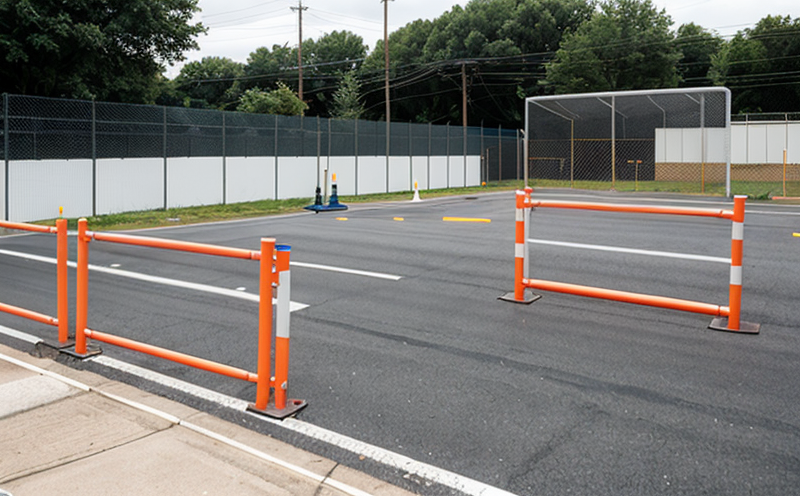DIN EN 175 Welding Protective Shields Performance Testing
The DIN EN 175 standard specifies the performance requirements and test methods applicable to welding protective shields. These shields are designed to protect welders from harmful radiant energy, including ultraviolet (UV) rays, infrared (IR) radiation, and visible light, during the welding process.
Welding is a hazardous activity that involves exposure to intense levels of heat and light. Protective shields play a critical role in ensuring the safety of welders by filtering out harmful components of the arc light and providing a clear view through the shield itself. DIN EN 175 aims to standardize these protective devices, ensuring they meet stringent performance criteria.
The testing procedures outlined in this standard are designed to assess various aspects of welding shields' performance, including:
- Visibility: Ensuring that the welder has an unobstructed view through the shield while still being protected from harmful radiation.
- Thermal resistance: Evaluating how well the shield can withstand high temperatures without degrading or melting.
- UV and IR filtering: Measuring the effectiveness of the shield in blocking ultraviolet and infrared rays, which are known to cause damage to skin and eyes.
- Ergonomics: Assessing the comfort and fit of the shield for the welder's head and neck during prolonged use.
The testing process begins with a thorough examination of the physical properties of the shield, including material composition and construction. Samples are prepared according to specific dimensions outlined in the standard to ensure consistent results across multiple tests.
Testing typically involves exposing the shields to controlled environments that simulate real-world welding conditions. This may include exposure to high-intensity light sources, varying temperatures, and humidity levels. The performance of each shield is then measured using specialized instruments that can accurately capture data on temperature changes, UV/IR radiation transmission rates, and visual clarity.
After the initial round of tests, any shields failing to meet the required standards are subjected to further analysis. This may involve more rigorous testing or adjustments to the design and manufacturing process until all shields comply with DIN EN 175 requirements.
The results of these tests are compiled into comprehensive reports that detail each shield's performance metrics against specified criteria. These reports serve as evidence of compliance for manufacturers, helping them ensure their products meet international safety standards before reaching the market.
By adhering to DIN EN 175, companies demonstrate a commitment to worker safety and quality assurance in occupational environments where welding is performed regularly. This standard ensures that protective shields not only perform effectively but also provide reliable protection over extended periods of use.
Scope and Methodology
The scope of DIN EN 175 covers the performance requirements for welding protective shields used in various industrial settings. The methodology involves a series of tests designed to evaluate different aspects of these shields' functionality:
- Visibility Tests: Shields are placed over a standardized light source, and observers assess their ability to see through the shield without significant distortion.
- Thermal Resistance Tests: Samples are exposed to controlled heat sources until they reach specified temperatures, after which any damage is evaluated.
- UV/IR Filtering Efficiency Tests: Spectroscopic analysis measures the percentage of ultraviolet and infrared radiation transmitted through the shield compared to baseline values.
- Ergonomic Comfort Assessment: Participants wear the shields for extended periods, providing feedback on comfort, fit, and ease of use.
The methodology is designed to be rigorous yet practical, ensuring that only high-quality protective shields are approved. The standardized procedures help maintain consistency in testing across different manufacturers and regions.
Benefits
Adhering to DIN EN 175 offers numerous benefits, both for manufacturers and end-users:
- Enhanced Safety: Ensures that welders are protected from harmful radiation, reducing the risk of injury.
- Improved Visibility: Provides clear views through shields, enhancing situational awareness during welding tasks.
- Regulatory Compliance: Demonstrates adherence to international safety standards, facilitating smoother business operations.
- Consumer Confidence: Builds trust with customers by showcasing commitment to quality and worker safety.
- Promotes Innovation: Encourages manufacturers to innovate within the framework of established safety protocols.
Eurolab Advantages
EuroLab is uniquely positioned to provide top-tier DIN EN 175 welding protective shields performance testing services. Our advantages include:
- Expertise and Experience: Years of experience in occupational safety and protective equipment testing ensure accuracy and reliability.
- State-of-the-Art Facilities: Equipped with cutting-edge instrumentation for precise performance measurements.
- Comprehensive Reporting: Detailed reports that provide a clear picture of each shield's performance metrics.
- Timely Turnaround: Efficient processes ensure prompt delivery of test results, aiding manufacturers in timely compliance.





